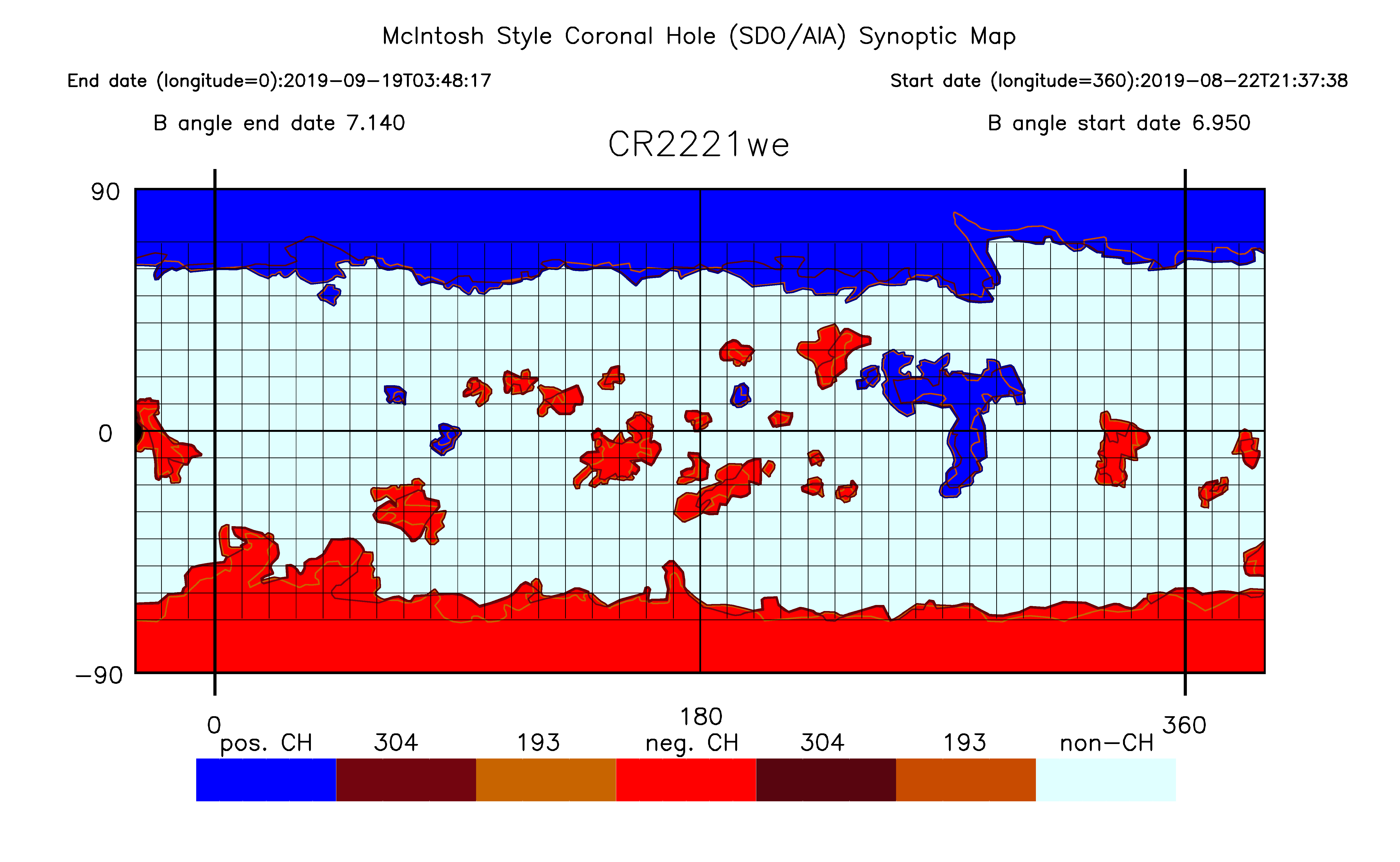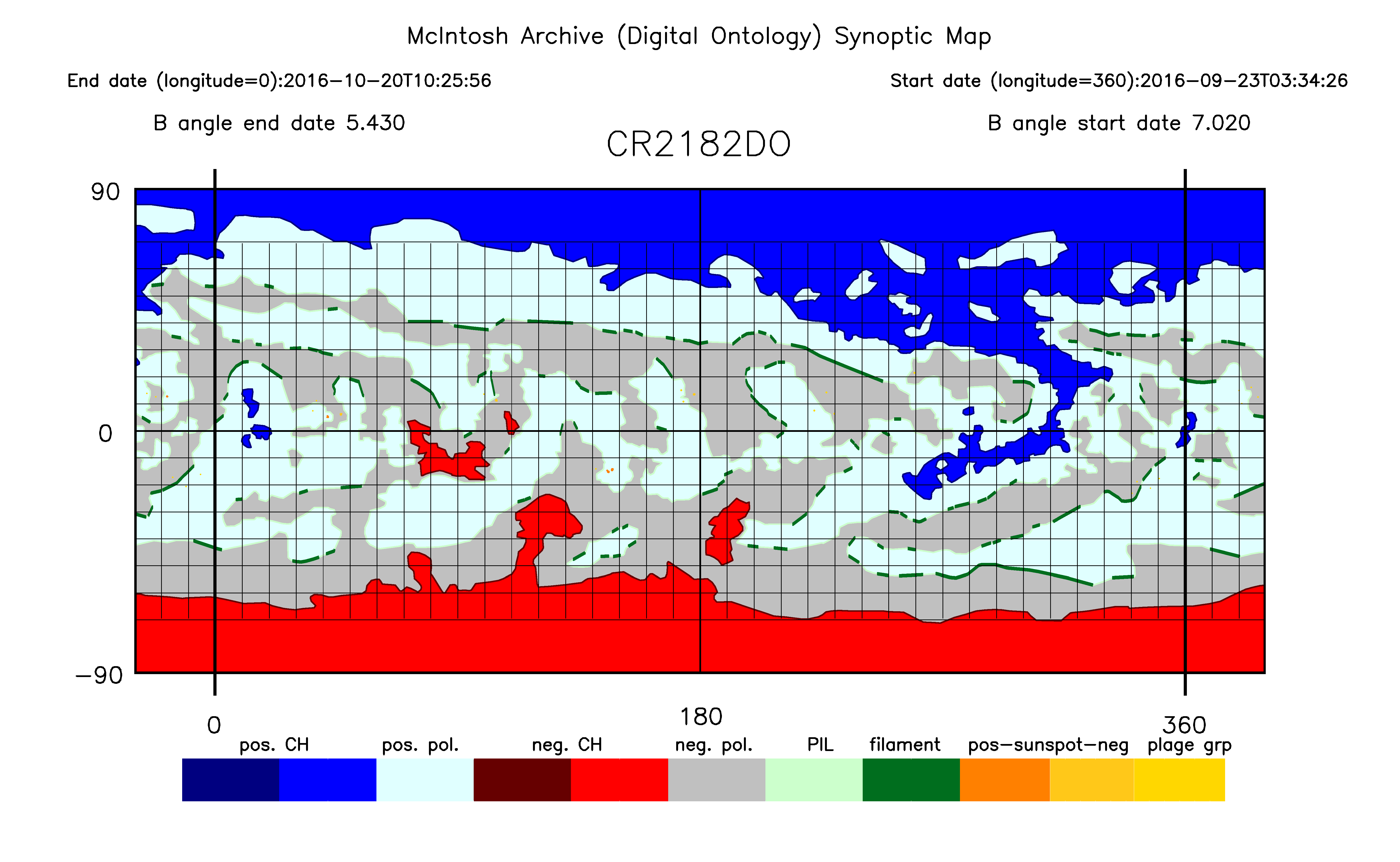
The global context of solar rotations during WHPI periods of focus can be provided by McIntosh-Archive style synoptic maps of solar features, including magnetic polarities, coronal holes, filaments, sunspots, and plage. Started in 1964 by Pat McIntosh, as a hand-drawn synoptic mapping effort based on H-alpha and magnetogram data, the maps were later updated to include coronal hole boundaries based on He-I 1083 nm data. The full historical archive has been digitized and described on the HAO page, with data products for the full archive publicly available through a NOAA repository. In the digitization process, the mapping has been updated to make use of modern computational capabilities, and the use of space-based instrumentation has been validated in the context of extending the archive through to the current solar cycle while keeping the archive consistent with its historic record.


The McIntosh Carrington Synoptic maps are a global representation of solar activity, driven by the evolving solar magnetic field. Each map covers 360° of a Carrington rotation. The extra 30° on either side overlaps with the previous and following maps. Magnetic features are identified by distinct colors: Blue represents positive-polarity coronal holes; red represents negative coronal holes; pale blue represents areas of dominant positive polarity; gray represents areas of dominant negative polarity; dark green represents filaments; light green represents polarity inversion lines; dark orange represents positive polarity sunspots; light orange represents negative polarity sunspots; and (small) yellow spots represent plage regions. Two distinct synoptic series exist: the Classic McIntosh maps with complete solar feature information and the Coronal Hole-only maps (see sample figures above). The new digitally processed maps use SDO/AIA 193 Å and 304 Å imaging data, together with SDO/HMI magnetic information to extract the solar features location. These have proved valuable in analyzing differences between solar minima as well as disambiguating evolutionary changes through comparison of maps made from different observer vantages (e.g. Hewins et. al. 2023 and Allen et al. 2023).
As work is being done to extend this synoptic product to the current day, priority has been given to creating the McIntosh Carrington Synoptic maps corresponding to the specific WHPI campaigns linked below: